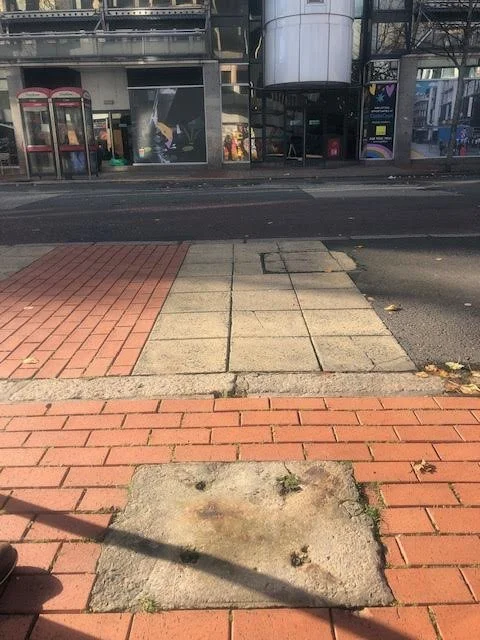Traces of the Troubles
The aesthetics of the conflict-era continue to shape more recent design decisions in the city; uncanny security fences that use forms and fabrication methods from the past, surveillance devices, security warnings in a public parking garage, or public service announcements on arterial roads leading into the city center, all tell a tale of continued fear, sectarian violence, and securitization that permeate this urban environment.
Walking a route delineated by the old ring of steel, one can still trace the barriers through a regular and recurring pattern of bolt holes at a certain height on the walls, metal plates on the ground at Rosemary St. and North St. and again at Royal Ave. and Lower Garfield St; the location of two old checkpoints. Bollards found throughout the city center, trace the route of the security cordon and frequently announce the location of the old barricades, now permeable to foot traffic.
Walking the
Ring of Steel
Workshops begin with a walking tour searching for the urban archeology of the Troubles and evidence of the ring of steel. Bollards delineate the route now permeable for pedestrians, if not vehicular traffic in all instances. Bolt holes located on still existent buildings register the location of the security structures; gates, fences, turnstiles and checkpoints that were removed slowly throughout the 1990’s. The last traffic barriers on Castle Street and High Street vanished without fanfare in the early 2000’s.
Bollards of Today
Throughout Belfast, but most especially when tracing the route of the ring of steel one sees a proliferation of bollards. While bollards have become increasingly evident in cities across the world, marking pedestrian precincts, permeable only to those on foot, they frequently register the site of the old security cordon in Belfast.
Contemporary Aesthetics
Belfast is a brighter, cleaner, calmer and prettier place today, but remnants of old barbed wire fences permeate the environment. Newly designed security fences reference barriers from the past, a design aesthetic that is agressive to the visitors eye, but thoroughly normalized in Belfast.
Public Service Announcements
(Left: PSNI/Crime Stoppers warning poster). At Castle Court shopping center, a pair of disembodied eyes scrutinizes viewers from poster, warning them that the area—and they themselves—are being watched by law enforcement, and (Right: “Ending the Harm”, bus stop lower Lisburn Rd.) a government ad campaign uses the image of a bloodied young man to caution against the on-going dangers of paramilitary groups and sectarian self-policing issues, at a bus stop near the centrally located protestant working-class area of Sandy Row.




































